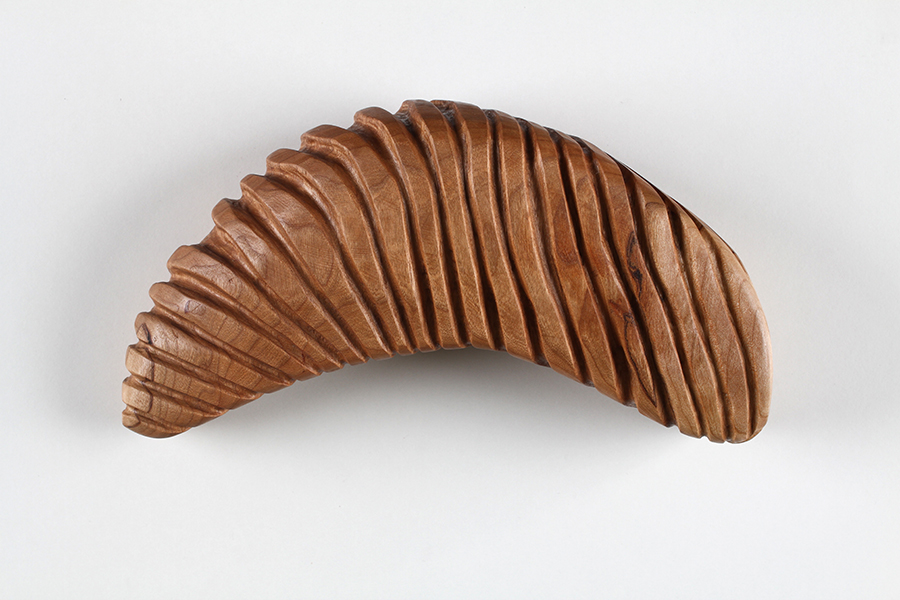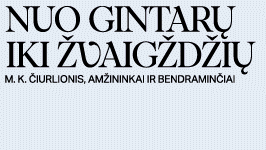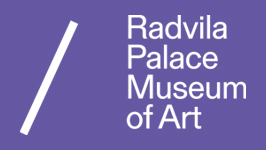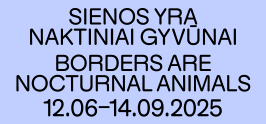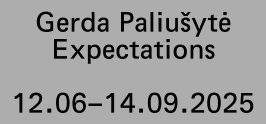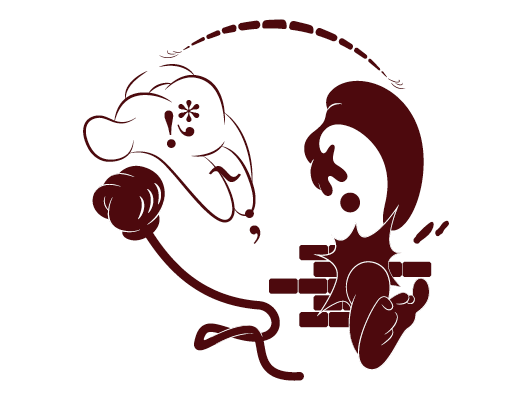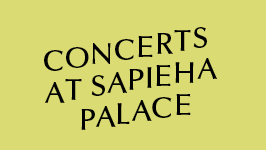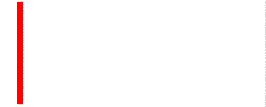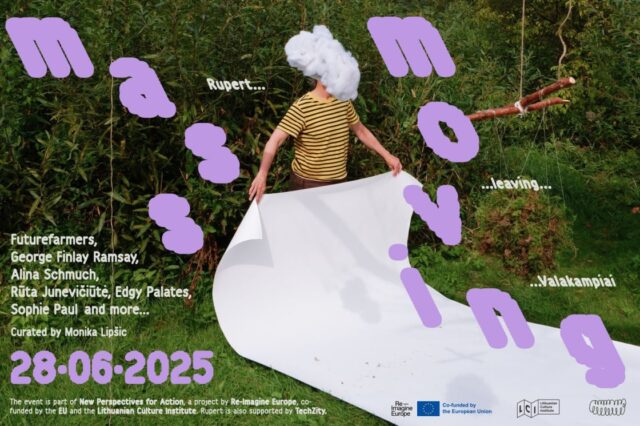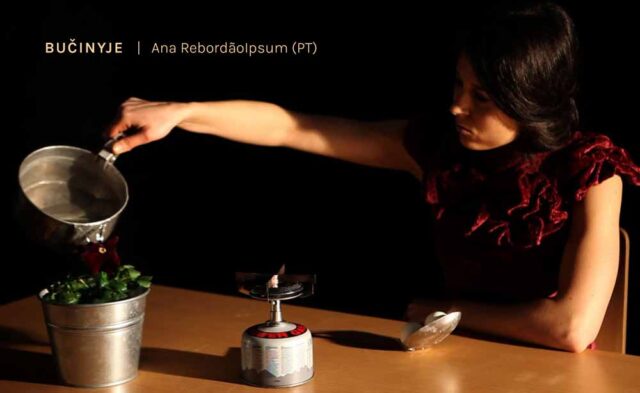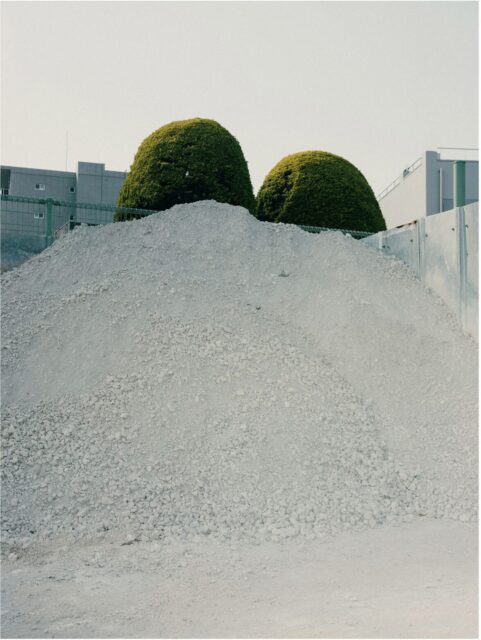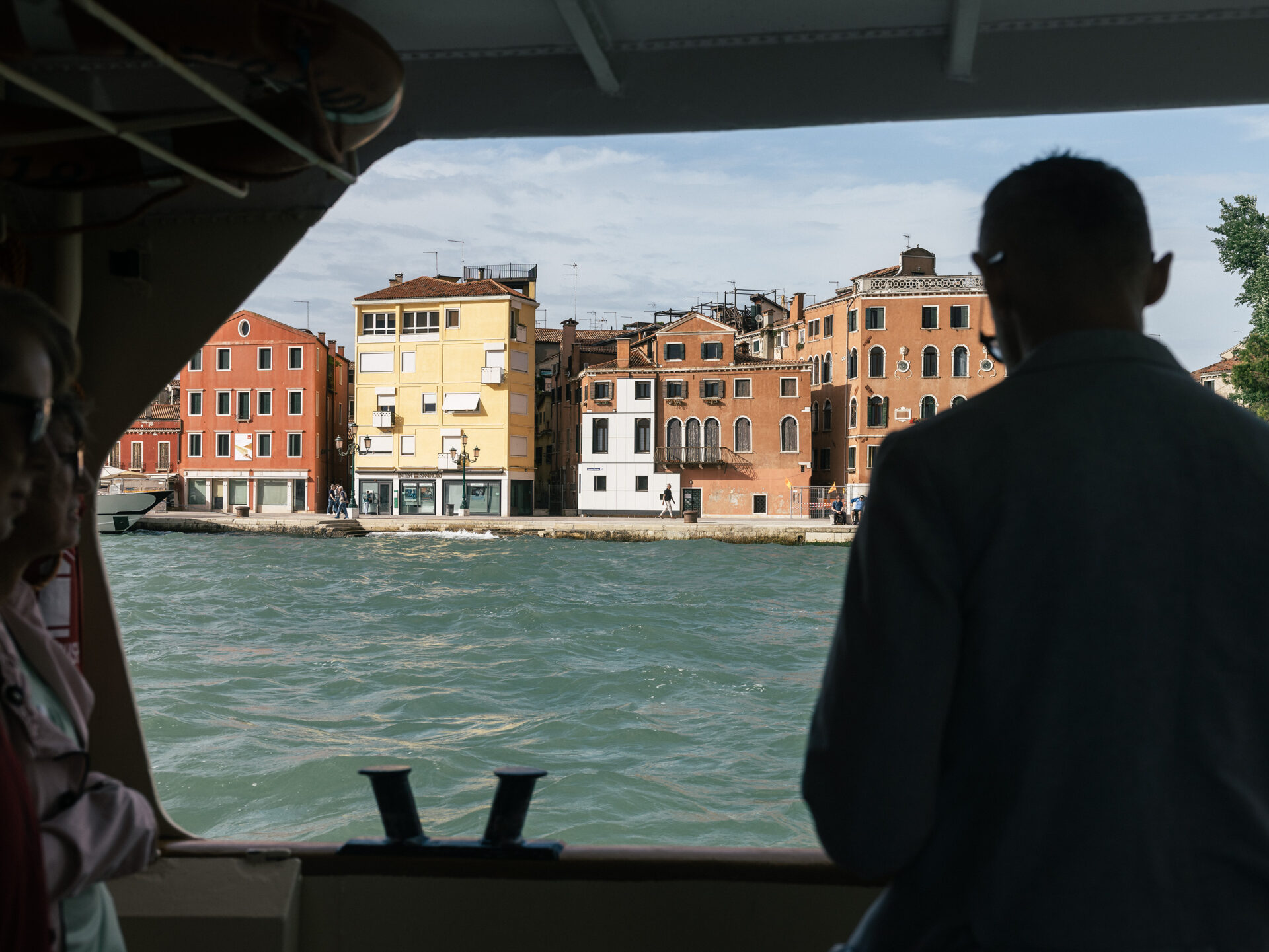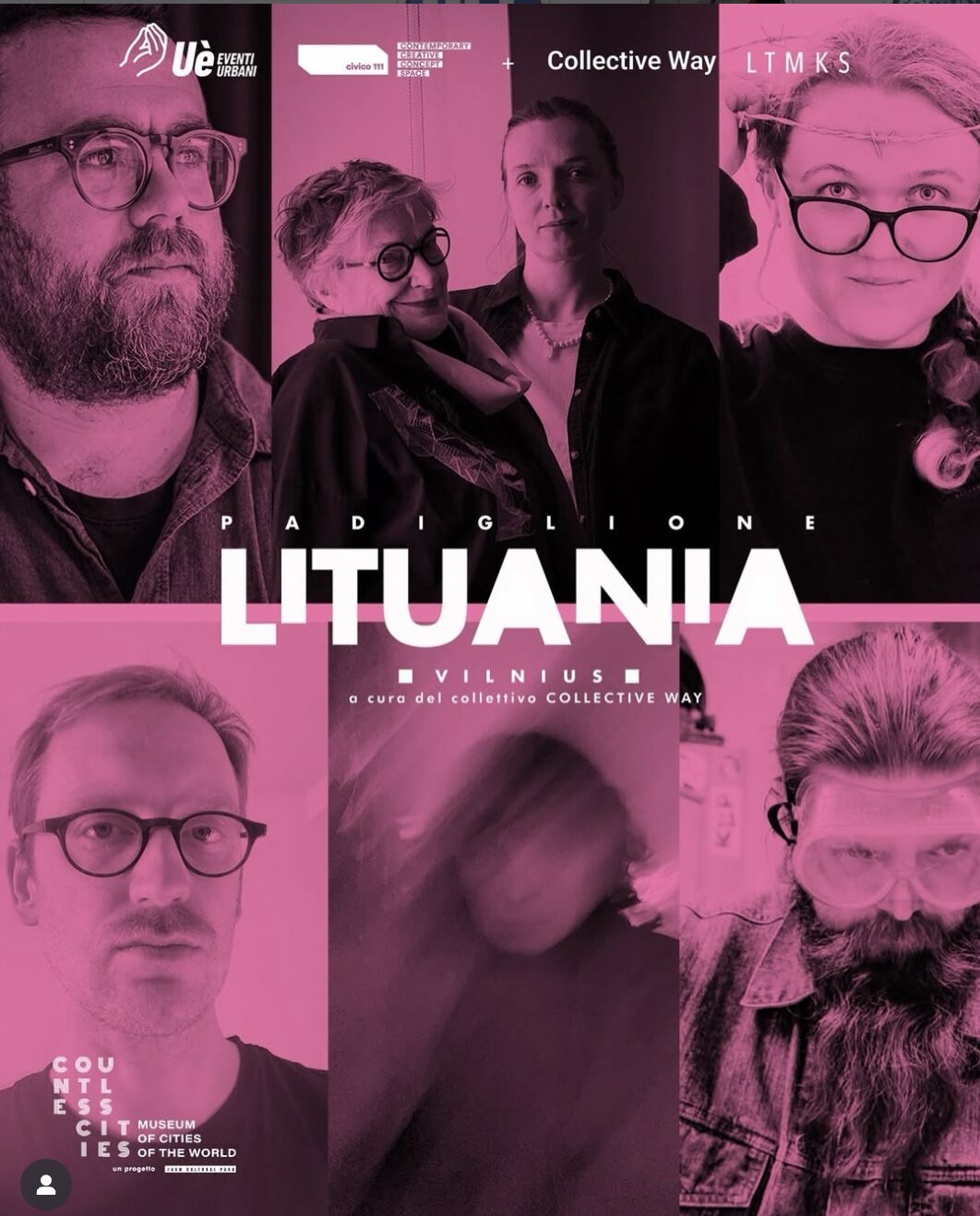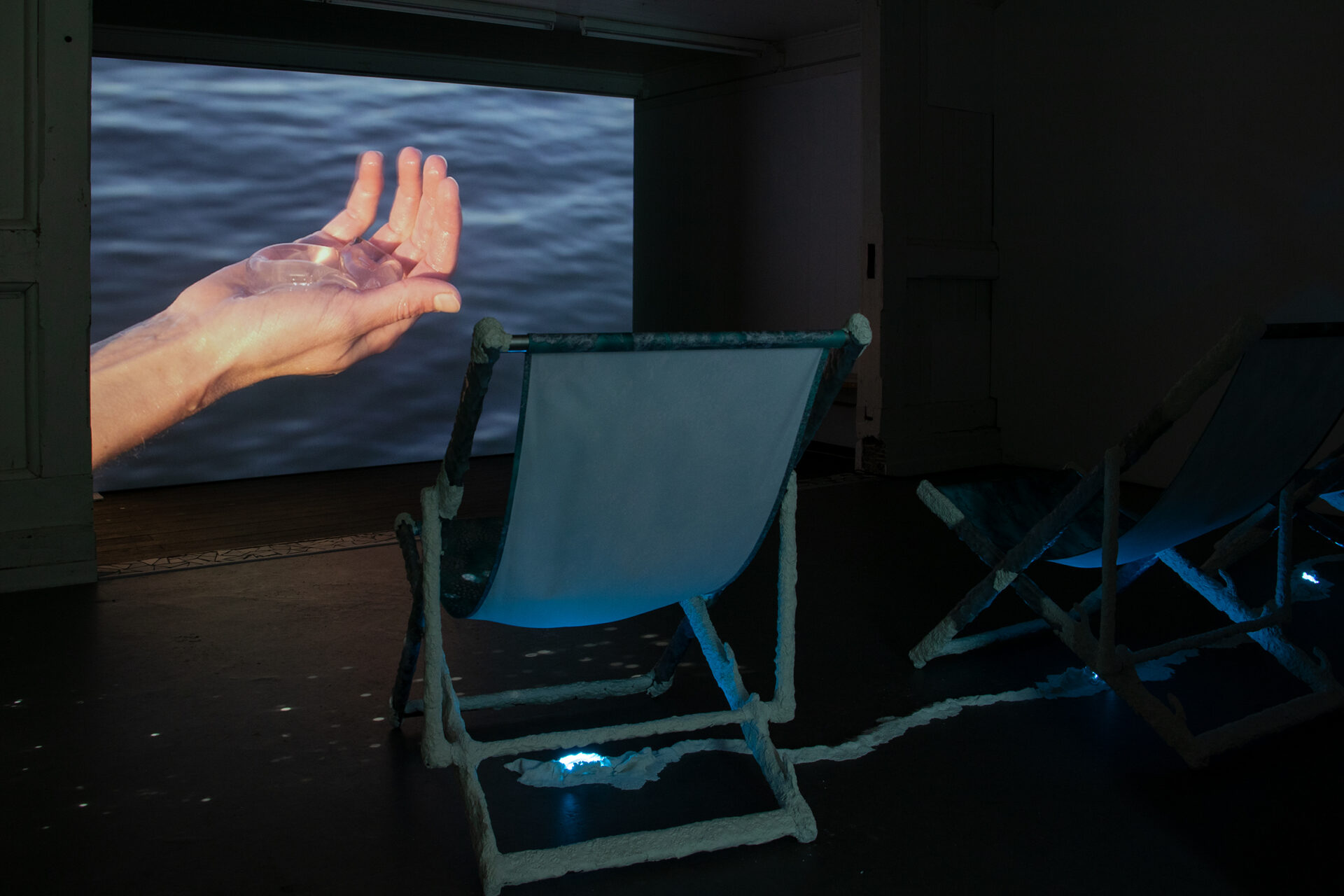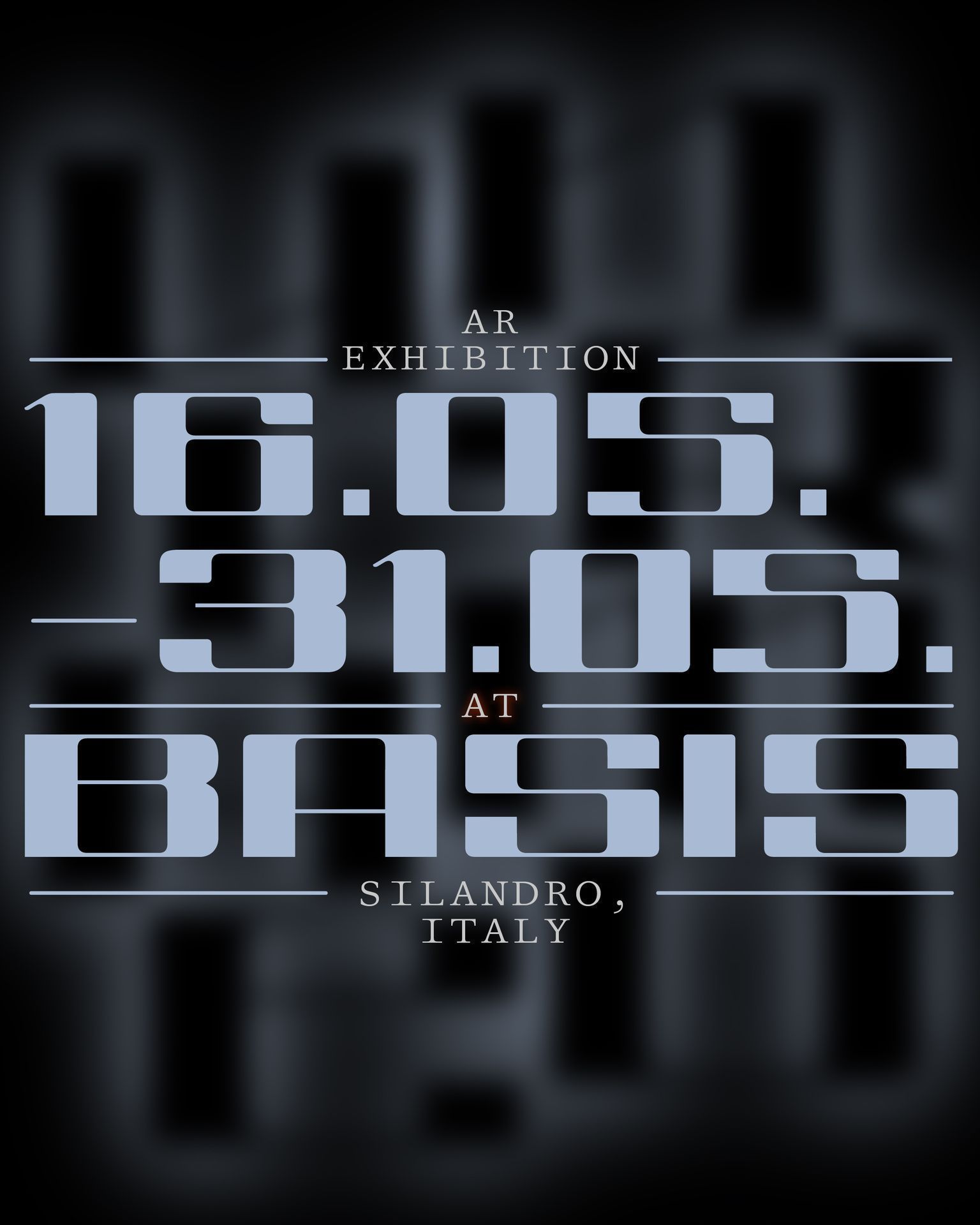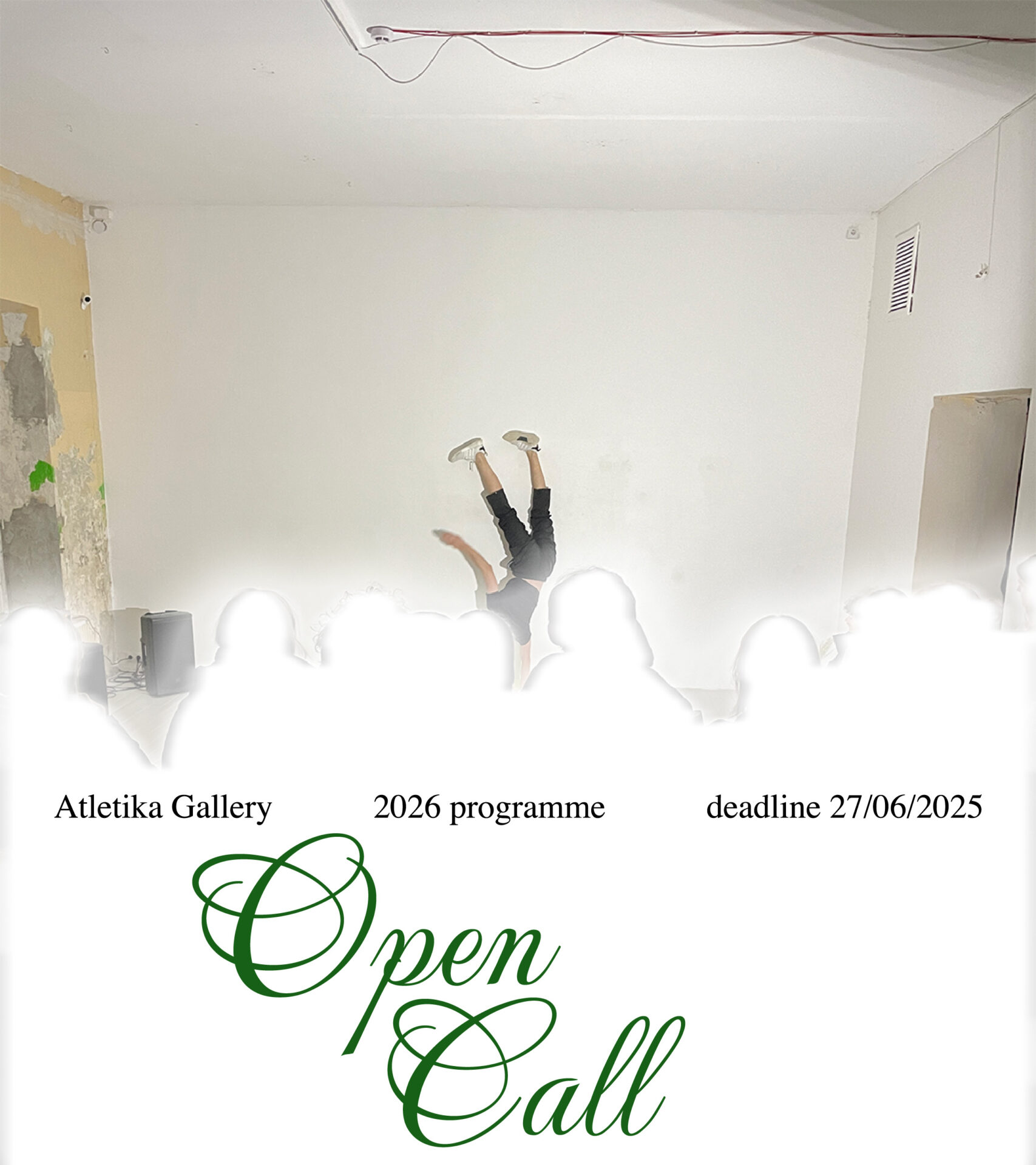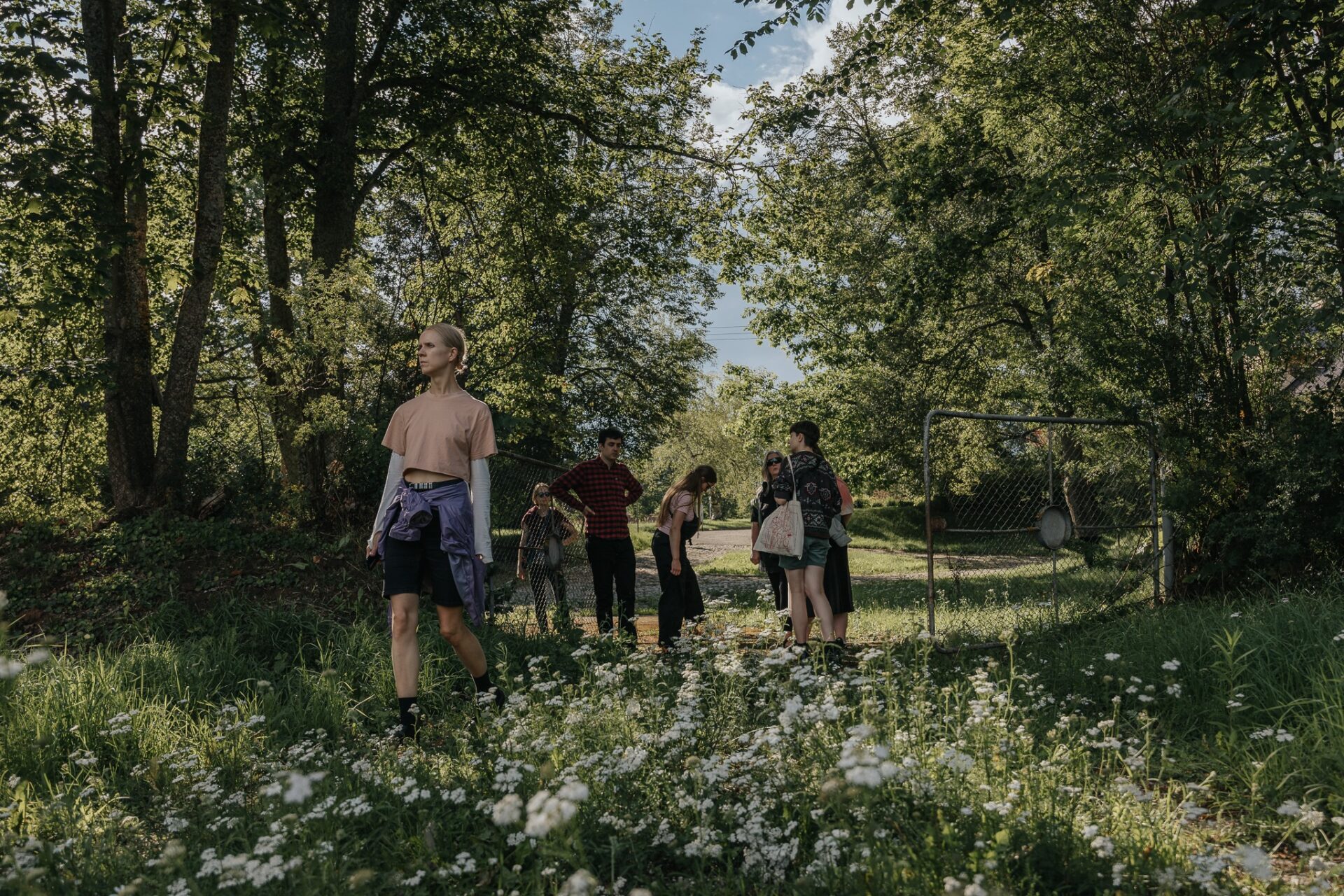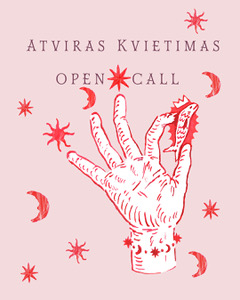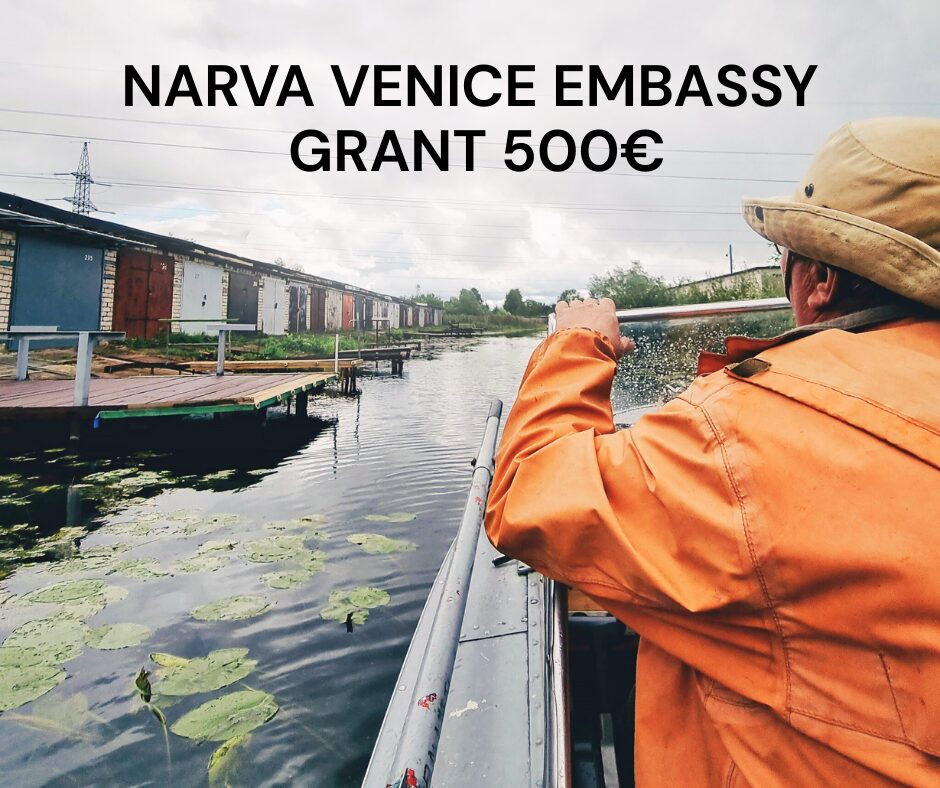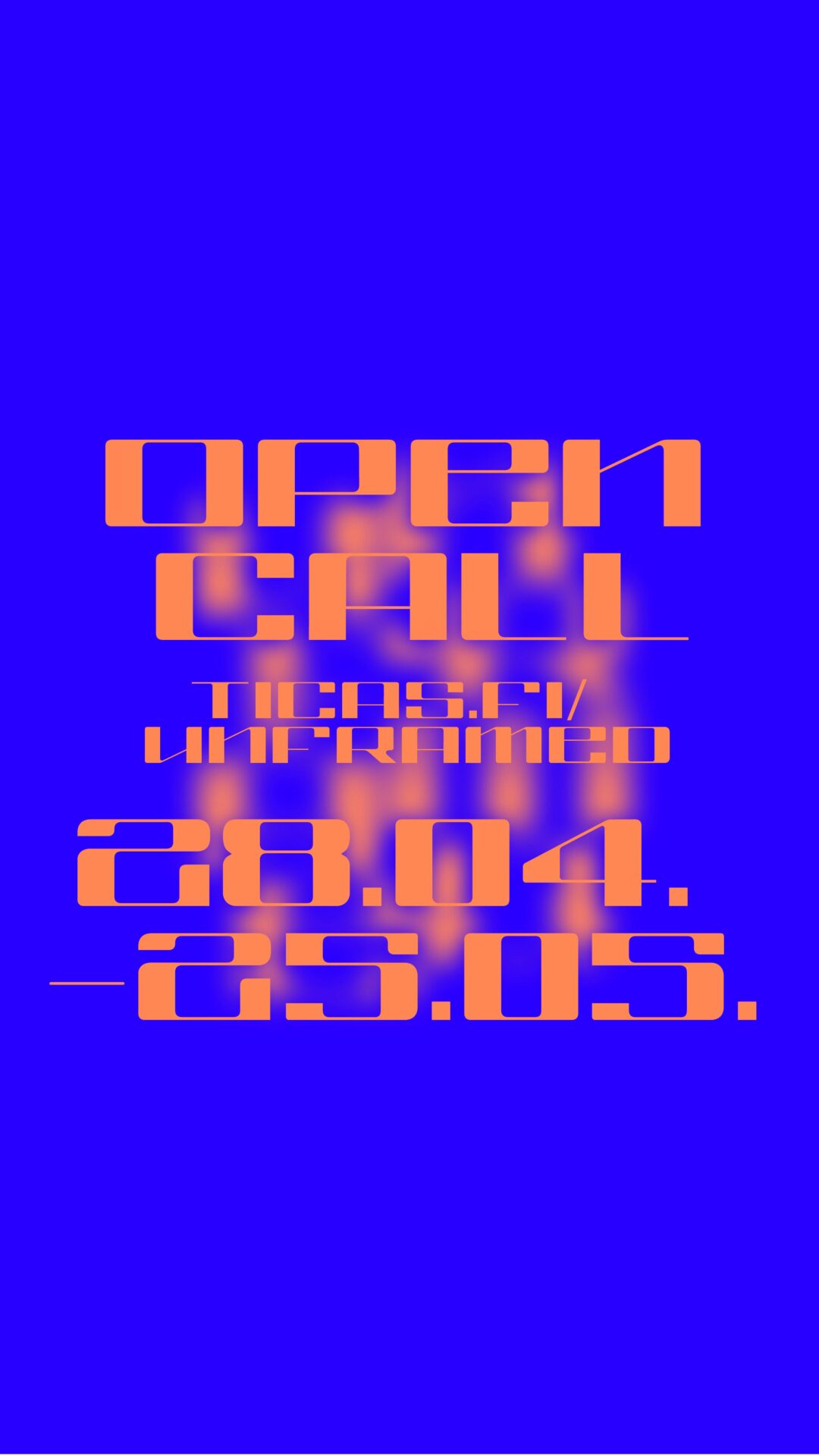Ulijona, you live in London, you make videos, objects and installations, and you also practice photography. You compose music (with the duo Steve & Samantha), collaborate with fellow artists (for example, with the artist Rūta Kiškytė, you published ‘Nothing But’ and ‘Nothing but Two’), and you write. Is this creative versatility a conscious strategy for a young artist working in today’s interdisciplinary and inter-field (socio)cultural context? Or is it a kind of individual alter ego of yours?
I encounter a certain idea, image or experience and then I live with it for a while. The shape the work eventually settles into is a different question altogether. Sometimes it can be dictated by the circumstances.
For me there is no hierarchy between a song, a poem, an object or a photograph. Perhaps I risk being superficial and incoherent, but to me a somewhat dilettante and amateur attitude towards art and making is important, interesting and productive.
When I decided that the work Eyebrow should be a wood carving, something resembling Rūpintojėlis, I started to look for a professional woodcarver to commission a recognizable and well-made object. Then I realized that I actually wanted to do it myself as soon as possible. I like to act in the same moment as the impulse I have to make something occurs. So I went to a woodworking workshop, found the right size piece of wood and started carving it. I liked spending time there: while some people were making benches, or architectural models, I thought of my grandfather and his bushy eyebrows. I loved carrying the eyebrow in my arms, as I went in and out of the workshop; it looked like an enormous croissant. The workshop’s staff found it funny and would sometimes show it to others and say: ‘She’s making an eyebrow, and just one.’ I never felt the need to say that I’m a woodcarver or that – in terms of medium – I work with wood. I was simply making an eyebrow. Of course, I did work with wood, but only as far as the wood allowed to be worked with. Later I found out it was cherry wood. There were a couple of cherry trees outside our house when I was growing up and I remember that my grandfather would recite the lines ‘Our lives are like a feast, like the blossom of a cherry tree.’
If I am not mistaken, you dedicated to your grandfather, the actor Laimonas Noreika, not only the object (Eyebrow), but also a text with the same title?
Yes, this is a video work in which I read a piece written during the time I was making Eyebrow. It turned out to be about memory, loss and preservation. Meanwhile Eyebrow, not unlike the traditional Rūpintojėlis, was installed on the front of my family home above the door protecting it.

Ulijona Odišarija, Eyebrow, 2016
As I was looking through your portfolio, I got the impression that the world around you which you observe, and which finds its way into your artworks in one way or another, is gathered into certain details; your chosen means of expression are consequently subtle, tiny and fragile. Could you formulate any guidelines, the problematic of your work, maybe a certain field of expression, or experience? Is there a theme that somehow prevails among your interdisciplinary artworks?
I’m interested in what it means to work ‘from memory’. Short-sighted people often recognize their friends from the way they walk and their posture. I’m interested in this kind of relationship between memory and accuracy, like how the things we remember become softer and blurrier with time, or how they merge with words we overhear, or with the stories of others and the images we’ve seen elsewhere. In my works I want to know how working ‘from memory’ and following your experience of something (or a memory of it) as accurately as possible can actually bring about something completely new and of itself, and yet fully integral. I am particularly fond of situations where it is difficult to distinguish which part has been remembered, made up, or dreamt.
Writing for me is similar. When I write in English it is not always grammatically correct and my relatively modest vocabulary creates a kind of frugality. Sometimes the sound or the shape of a word is contradictory to its meaning: for example, a smudge to me sounds clean. I believe that bilingual thinking expands your thoughts so they become softer and more malleable or open to change.
Like many artists I know I lead a double life: for half the week, I’m an office worker and I try to spend the rest of my time on my art practice. This tension is valuable to me. What I do and how I live leaks into my art. For example, some of the materials I am now using in my objects are paper clips, post-it notes and dried-up pieces of mud that get stuck to the soles of my shoes on the way to the office.
I hope it doesn’t sound too esoteric, but I want the subjects and the materials to find their way to me, and I hope to recognize them.
In February, your work Softening (A Nightstand) was exhibited in a single artwork of contemporary visual art or a design object gallery apiece (Didžioji St 38, Vilnius), which has the task of promoting the artist behind the artwork/object, as well as of arousing interest in contemporary art. Usually (young) artists participate in group exhibitions, or they have their own personal multiple-piece exhibitions. Do you think there is a difference between having one work in a group exhibition, to which curators usually invite artists, and having a work exhibited in a single-artwork gallery?
Each exhibition is different to the last, be it a group show, solo show or an exhibition that focuses on a single work. Once I create something, I feel responsible for it but it does not belong to me anymore. It belongs to the world, and I enjoy when it finds its way in to the hands of others, while they try to work out what can be done with it, where and how it could be placed or what it could appear next to. I can only hope for a sensitive relationship, a story or an anecdote between the work and the curator, the work and the space it is in, as well as the work and the whole exhibition. I can only trust that the work is where it needs to be.
I was happy to show Softening in the apiece gallery in the middle of winter. I was imagining the snow and the slushy streets contrasting with the nightstand with the green meadow inside it, as if it was a foreign body, a glitch. However, Milena (one of the founders of apiece) wrote that once the work was finally installed, the snow had already thawed, and the spring had (almost) come.

Ulijona Odišarija, Softening (A Nightstand), 2016
Although the snow melted earlier than expected, the deep green bent grass thrusting out from the drawer really did soften anticipation of the real spring… Is the viewer important to you? What do you expect from him or her?
It’s great that apiece is actually a window and not a gallery that you have to enter, there are no working hours. Therefore, you encounter the work by chance, as you are walking past. How can a work affect or relate to the thoughts of people passing by without demanding any other commitment? That’s what really interests me.
In London, I often go past this window, behind which there is always some sort of installation. Sometimes it’s an assemblage of feminist literature and cheap romantic novels, sometimes big lumps of wood with tiny plastic mushrooms, sometimes dry leaves and shards of glass. It’s always put together in a minimalist way and is very subtle and unpretentious, like a good joke. Because the rest of the space is behind closed curtains, I’m not sure if it’s someone’s home, an office, or a studio. Nevertheless, every time I walk past it, I feel very grateful to whoever makes that moment of curiosity and poetry possible. I’d like my work to be discoverable like this. It’s important not to over-explain. I trust that more information can be discerned from the use of materials than from a description or explanation. In this sense, I expect quite a lot from the viewer: to be curious and open-minded, to be willing to spend time. On the other hand, I don’t mind if they simply walk past without ever noticing it. Ideally, I would like it to be a conversation. It’s more exciting to hear what and how others think about an artwork, instead of imposing my own understanding as the person who made it.
One of my works, Hair Folder, exists as a folder on my computer. I only show it when someone asks me to. This means it will probably be seen by very few people but that is also a part of the work. The folder consists of a collection of photographs downloaded and saved from buy-and-sell hair websites. The photographs are indeed ‘saved’: once the hair is sold, the ad is taken down along with the pictures.
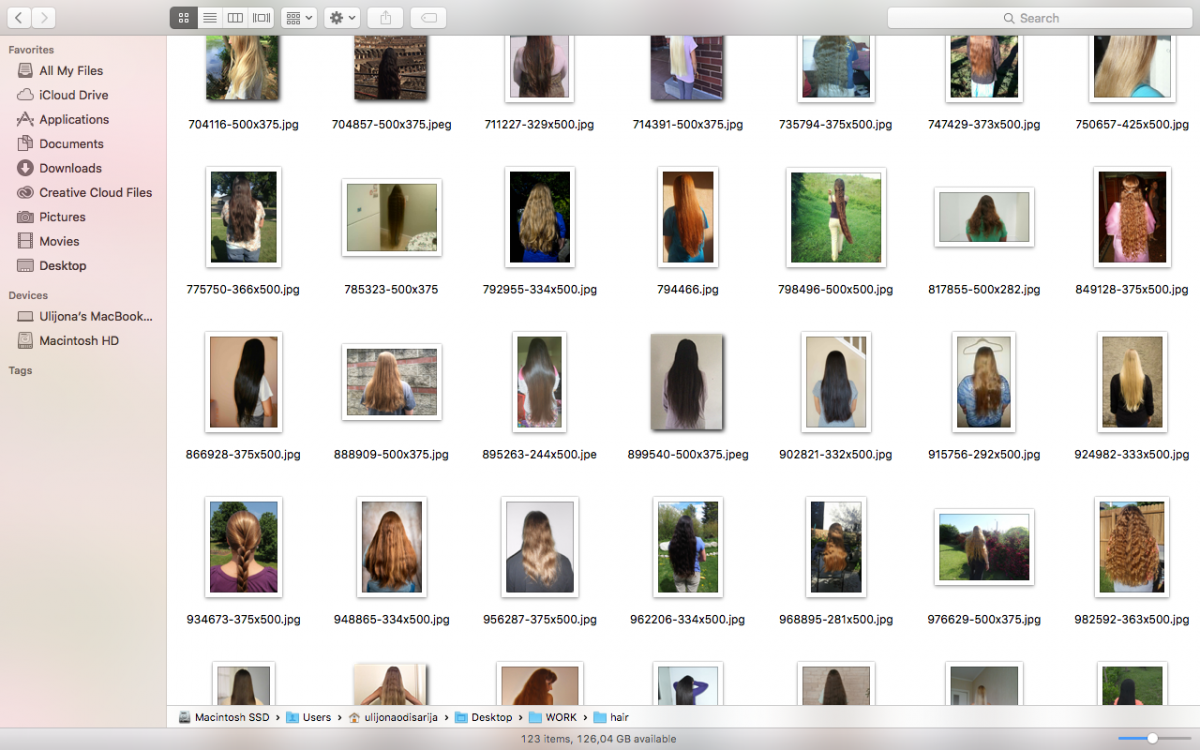
Ulijona Odišarija, Hair Folder, 2014–present
In May 2018, you led the creative workshop ‘Silent Collections’ at the National Gallery of Art in Vilnius. This question is from the workshop’s description. How do you react to other artists’ work? How do the exhibitions you visit transform into something personal or something new, if indeed they do?
To be honest, this happens quite rarely, as I am not a regular exhibition-goer. Most of the art I encounter is on Instagram, but I don’t seek it out. I’m interested in fragments, hints of processes which artists share on their social media profiles and I love it that they appear amongst dogs, ads, selfies, bits of interiors, fashion, or nature. Sometimes it’s more exciting to hear a description of an exhibition or a film from friends, and to imagine it, than to see it in the space myself.
I’m trying to remember a memorable exhibition. Perhaps the Eleventh Baltic Triennial, curated by Virginija Januškevičiūtė. I was back in Vilnius for a week or two, and went to the CAC almost every day. I can hardly remember any individual pieces, only a sense of lightness. It felt weightless and euphoric – the state I experience only really by swimming in very cold water or after a good night’s sleep, not at a gallery.
This year you will have two Steve & Samantha concerts (at the CAC in May, and Nida Art Colony in July). If I understand correctly, you are the artist behind the melancholic lyrics and the close-up videos, and you are also the voice. As you mentioned before, the ideal relationship between you and the viewer is to watch a piece together and have a discussion. Do you experience a closer connection with your audience when you are performing? By the way, is Sweatlana a part of Steve & Samantha, or are these two musical projects completely separate?
Steve & Samantha is a pop band which was formed with visual artist James Lowne in a small office in London. We write the music together, our songs crystalize from hours of playing and experimentation My lyrics usually appear at that same moment, too. I had never played a musical instrument before this and I only sang (with great difficulty) in school, but now I play the keyboard and I am a vocalist: anything is possible. James has played the guitar for years, but I am still discovering the piano keyboard, trying to remember what I have just pressed, and in what order. We think about music as two artists, not as musicians, but the conventional song format is still important to us. We are interested what the structure of a song can be and what it means to us personally. So, you could say: we try to make conventional pop hits, our attitude and methods are DIY, while the sound is … maybe grunge?
We will be a part of Marija Olšauskaitė’s exhibition ‘Witness on our Behalf’ at the CAC for a couple of days. We’ll try to transfer the privacy of our experimental songwriting process into a public space, from a small room into a big hall, next to Marija’s works. It will not be a performance, although we will be heard and seen. I wonder how it will affect us, our music and our relationship with the viewers and the space. Later on we will be joined by a drummer, and at the end of the exhibition we will perform our first-ever gig here in Vilnius.
In my opinion a live performance becomes everyone’s business and responsibility. Everyone who experiences it, anyway. The important thing is not necessarily my personal connection to the audience, but the interrelations between the music and all the other elements involved: the energy, the anxiety, the thrill, the loudness, the space itself, all the expectations and the feeling of being together.
In Nida we will present a work made during our residency at Nida Art Colony in an exhibition curated by Dovilė Tumpytė and Marina Valle Noronha. I’m still not sure what it’s going to be: a song, a soundtrack, an album or a vase.
And Sweatlana is my DJ name. It came about in 2013, when Jurgis Griškevičius and I would occasionally play at parties around Vilnius. Since then, I have drifted away from more straighforward dance music. Now, when Sweatlana comes out once or twice a year, the sets consist of karaoke versions of songs, X-Factor audition recordings, the croaking of frogs and other sentimental sounds like that.
Thank you for the conversation.
The title of the interview is a quote from Ulijona Odišarija’s writings:
http://www.whatsgoodformeisgoodforyou.eu/Ulijona-Odisarija.pdf
Ulijona Odišarija lives and works in London. She completed her MA at the Slade School of Art, University College London, in 2016. She has participated in various exhibitions at the CAC and the National Gallery of Art in Vilnius, the ICA in London, and PAKT Amsterdam. Her poetry has been published in the art magazines Danarti (Georgia) and C-anal (UK), and on the e-platforms aqnb.com and whatisgoodformeisgoodforyou.eu. Her video works have been showcased at TIFF (Toronto), the East End Film Festival and Close Up Cinema (London), the LIMA Foundation (Amsterdam), and Import Projects (Berlin). Her work has been included in the Union of Lithuanian Art Photographers’ annual exhibition in 2016, ‘Lithuanian Photography: Yesterday, Today and Tomorrow’ (compiled by Virginijus Kinčinaitis), and in the book ‘Like There’s No Tomorrow: Young Lithuanian Photography’ (compiled by Justė Jonutytė and Paulius Petraitis, 2013).
